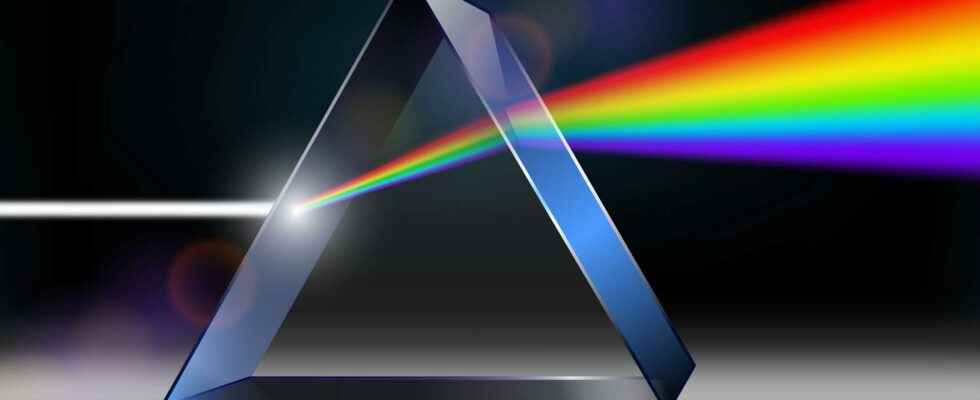Phys. Representation of the contribution (energy for example) of the monochromatic components of a wave (sound wave, electromagnetic wave or radiation), depending on the frequency (or wavelength) of its components.
For example, an acoustic spectrum represents the acoustic intensity as a function of the frequency or wavelength of a sound (sound wave). We speak of band spectrum (syn. Of continuous spectrum) if the distribution as a function of frequency is continuous, of line spectrum, if it has discrete components (emission spectrum atomic for example).
The shape of the spectra frequently constitutes a (spectral) signature allowing the objects which are their origin to be identified.
Obtaining and studying spectra is part of spectral analysis.
By extension, we speak of spectrum in physical particles to describe the different types of particles associated with a given field theory. So the different quarks of the QCD and the hadrons associated form the ‘particle spectrum’ thereof. Such a name is natural because it reflects the wave / particle duality and the fact that the different particles are a bit like the different energy levels of a atom possessing a given spectral signature because of the transitions between these levels under the influence of an external disturbance.
Opt. Obtaining a spectrum requires a dispersion, obtained by diffraction Where refraction. The study of emission andabsorption, their characteristic frequencies or lines make it possible to identify bodies, in particular atoms and molecules (spectroscopy).
The term spectrum refers to several different notions in physics, in particular:
- The absorption spectrum
- The emission spectrum
- The sound spectrum
- The electromagnetic spectrum
- Mass spectra
- The spectrum of hydrogen
The absorption spectrum
the absorption spectrum is obtained during the passage of an electromagnetic wave (generally the light) which passes through a semi-transparent medium or transparent, for example a gas. The spectrum is made up of colored lights and has dark lines (black lines) that correspond to the absorbed wavelengths. Light passes through chemical elements which absorb certain wavelengths. The absorption spectrum comes from the decomposition of polychromatic light by a so-called “dispersive” medium. Different wavelengths do not propagate at the same speed, it is the phenomenon of dispersion.
The emission spectrum
An emission spectrum is the spectrum of light emitted by a source, there are two types of spectra, continuous emission spectra and line spectra.
A continuous spectrum contains the range of all colors from purple to red, the 7 colors of the rainbow. This spectrum is obtained by the decomposition of the sunlight and in general by any source of light emitted by bodies at high temperature and under high pressure. The wavelength is generally more intense compared to other spectra. You should know that the higher the temperature, the lower the wavelength. Continuous spectra are of thermal origin, the temperature of the source and related to the emission of light and radiation is visible. This phenomenon can be achieved through lamps and bulbs of daily use since conventional bulbs produce light by heating. It is possible to determine the temperature of the source by analyzing the continuous spectrum. This is how we can know the temperature of the surface of a star.
The line spectra are obtained by electrical excitation of certain gases. At high temperature, the light emitted by a gas at low pressure leads to the formation of a line spectrum. This spectrum is obtained when we decompose the light of a spectral lamp, vapor of atoms. We can observe colored lines on a dark background. The atom emits light, this is called the emission of light by atoms.
Interested in what you just read?
.
fs4
